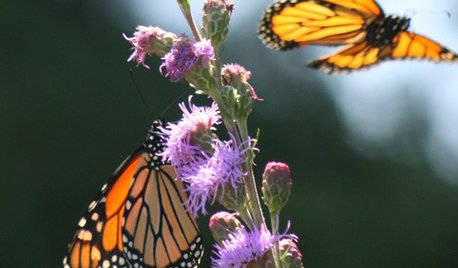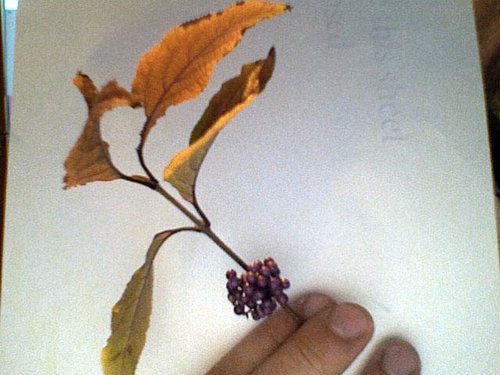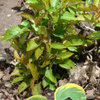Help! Is this poisonous? My child just ate it.
skeeker
14 years ago
Related Stories

MOST POPULAR7 Ways to Design Your Kitchen to Help You Lose Weight
In his new book, Slim by Design, eating-behavior expert Brian Wansink shows us how to get our kitchens working better
Full Story
PETS6 Ways to Help Your Dog and Landscape Play Nicely Together
Keep your prized plantings intact and your dog happy too, with this wisdom from an expert gardener and dog guardian
Full Story
SMALL SPACESDownsizing Help: Where to Put Your Overnight Guests
Lack of space needn’t mean lack of visitors, thanks to sleep sofas, trundle beds and imaginative sleeping options
Full Story
SELLING YOUR HOUSE5 Savvy Fixes to Help Your Home Sell
Get the maximum return on your spruce-up dollars by putting your money in the areas buyers care most about
Full Story
DECORATING GUIDESSlow Design: Today's 'Wabi-Sabi' Helps Us Savor the Moment
Learn about the design movement that's aiming to satisfy our real needs, leaving materialism in the past
Full Story
GREEN BUILDINGJust Add Water: Rain Barrel Magic
Take your rainwater storage from practical to beautiful with a new breed of design-friendly rain barrels
Full Story
DINING ROOMSBenches: Not Just for Picnics Anymore
Add Character and Clean Lines with a Stylish Bench at the Table
Full Story
MOST POPULAR33 Magic Household Cleaning Tips
Houzzers from around the world share their tips for transforming housework into child’s play
Full Story
EARTH DAYThe Case for Losing the Traditional Lawn
Work less, help the environment and foster connections by just saying no to typical turf
Full Story
GARDENING AND LANDSCAPING10 Great Ways to Unplug and Tune In to Nature
Whether you pledge to camp out or just promise yourself a stroll, these ideas will help you heed the call of the outdoors
Full StoryMore Discussions











trini1trini
skeekerOriginal Author
Related Professionals
Walnut Landscape Architects & Landscape Designers · McKinney Landscape Contractors · Peabody Landscape Contractors · Clearlake Landscape Contractors · Del Aire Landscape Contractors · Dickinson Landscape Contractors · Fort Wayne Landscape Contractors · Lyndhurst Landscape Contractors · New Berlin Landscape Contractors · Plantation Landscape Contractors · Four Corners Landscape Contractors · Forest Hill Landscape Contractors · North Aurora Landscape Contractors · Maple Heights Landscape Contractors · Laguna Beach Stone, Pavers & ConcreteUser
Carol Patterson
Iris GW
gardengal48 (PNW Z8/9)
Carol Patterson
flora_uk
gardengal48 (PNW Z8/9)
Carol Patterson
ltcollins1949
gardengal48 (PNW Z8/9)
flora_uk
seamommy
gardengal48 (PNW Z8/9)
seamommy
flora_uk
gardengal48 (PNW Z8/9)
flora_uk
gardengal48 (PNW Z8/9)
lycopus
User
weedwoman
beachplant
gardengal48 (PNW Z8/9)
flora_uk
beachplant
Carol Patterson
beachplant
Carol Patterson